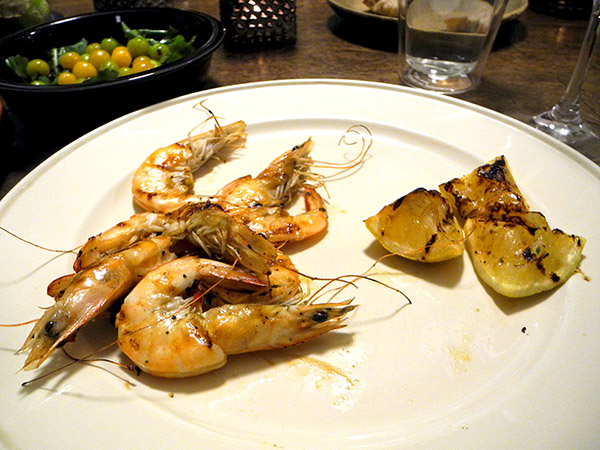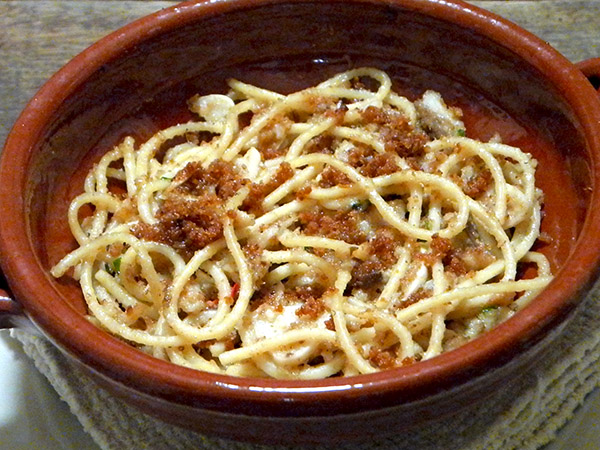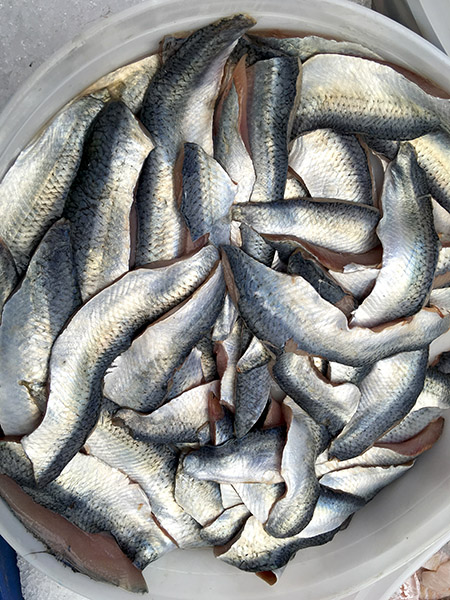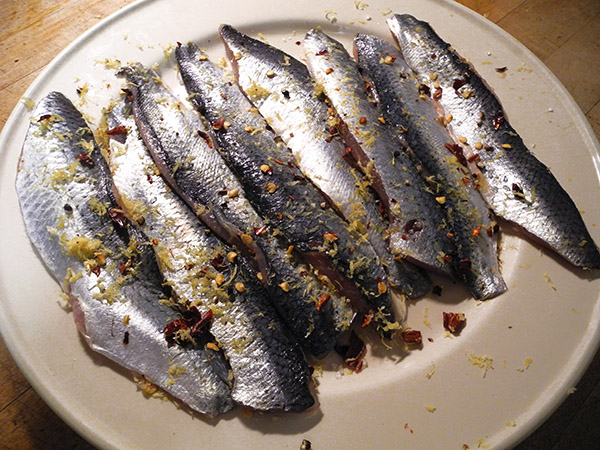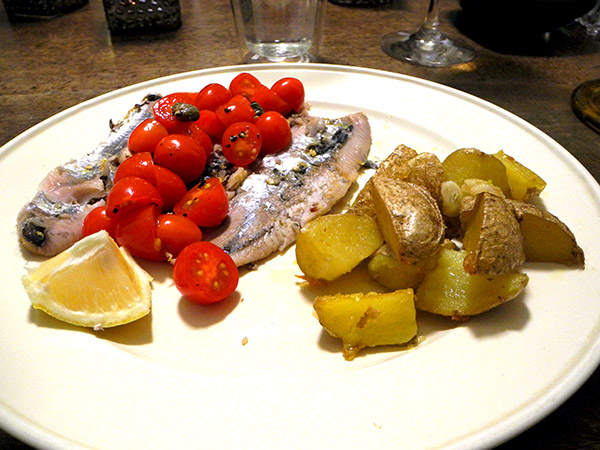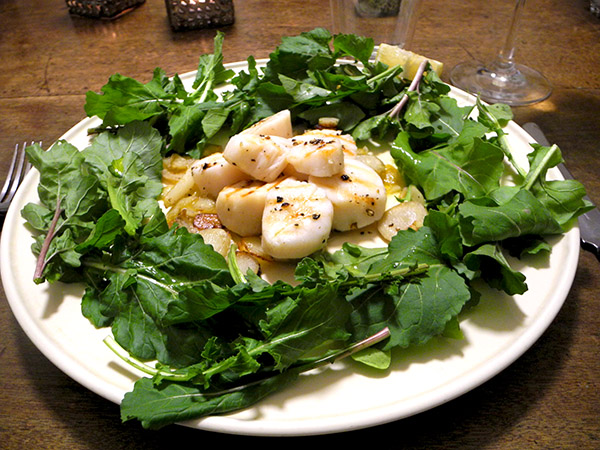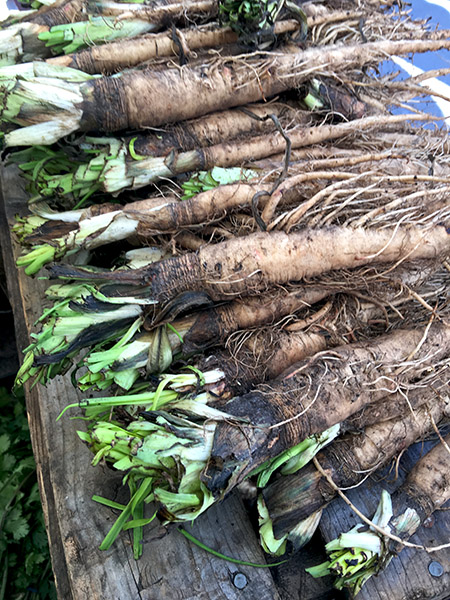minimal, ungenerous? but it took so long to eat that it still felt like enough
There was also a primi, so the relatively small secondo seen in the image above would probably have felt like enough for a satisfying dinner even if we hadn’t spent a lot of time peeling those five or six fresh shrimp. Grilling with the shells however, even pan grilling, is important for realizing the full taste of some wonderful fresh decapods.
I arrived at the Greenmarket just in time to grab the last of Jean Claude’s shrimp on Friday. Since they weighed in at somewhat less than what I would have preferred, I just added a first course to our dinner; this one could not have been easier to prepare, and it featured another great sea creature.
- less than half a pound of fresh whole Hudson Valley ECO shrimp, cut all of the way up the middle of their backs with a small kitchen shears (but still retaining the shells, as well as the heads and the tails), tossed with perhaps only two thirds of a dressing consisting of 1 large garlic clove from Northshire Farm mashed in a mortar along with a fourth of a teaspoon of salt and mixed with 2 tablespoons of lemon juice, ground black pepper, and most of one not-so-hot Cayenne thin red pepper from Oak Grove Plantation, finely-chopped, then one fourth of a cup of olive oil poured into the blend in a slow stream, while stirring, to emulsify it, and almost 2 teaspoons of super-pungent dried Italian oregano from Buon Italia added at the end, and left to marinate for less than 15 minutes; one lemon, cut into segments, lightly brushed with a little of the dressing, pan grilled until grill marks appear, and transferred to plates, immediately replaced on the pan by the shrimp, turned once, for about 4 minutes, or until cooked, served with the remaining dressing
- husk cherries from Norwich Meadows Farm, tossed with a handful of torn delicious ‘wild’ arugula from Lani’s Farm, dressed together with good olive oil, a drizzle of organic lemon, salt, and pepper, served in a bowl on the side [note; once again I forgot top halve the little fruits, which made picking them up about as tedious as removing the shells from the shrimp]
Before the shrimp we enjoyed a primi which was simply what had remained from the main course of a meal we had a few days earlier.
- two cazuelas holding a small amount of the smoked eel pasta served last Sunday, a little reserved pasta water stirred in, slipped into a 350º oven for about ten minutes, drizzled with olive oil, and sprinkled with a crunchy pangratatto
- the wine was an Italian (Marche) white, Le Salse Verdicchio di Matelica 2014
- the music was Poppy Ackroyd
